I think I hit the sweet spot (term used in professional kitchens!) with these duck breasts. This duck in red wine sauce has crispy skin, tasty tender medium meat and a delicious red wine sauce!
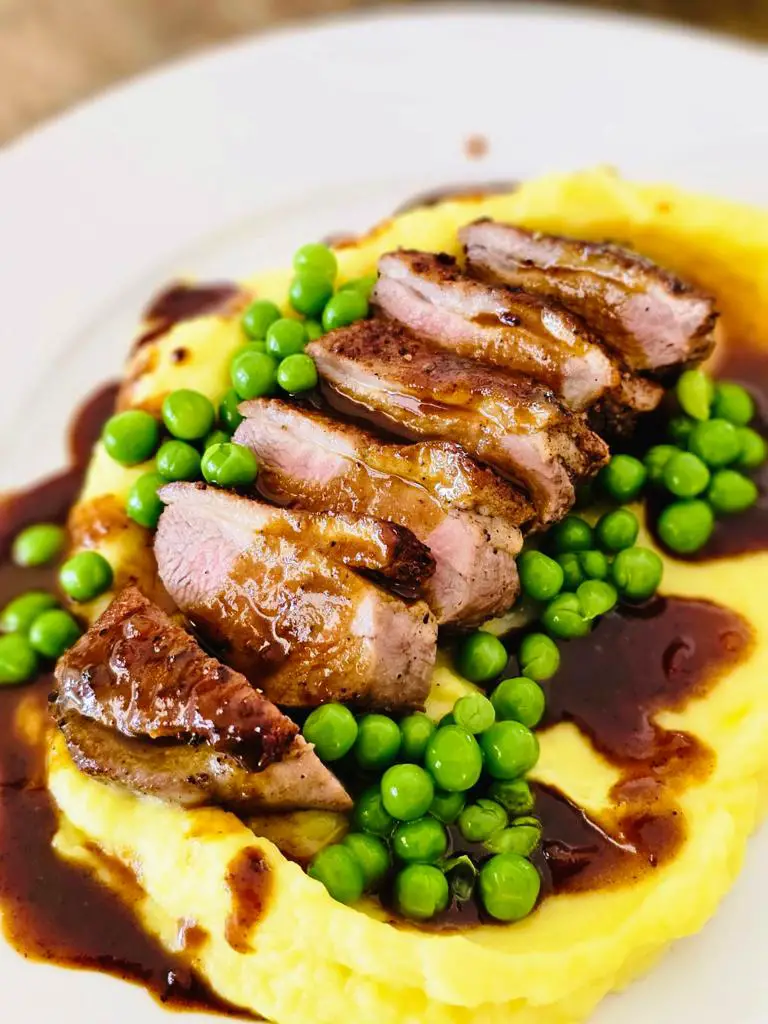
Dinner can certainly be elevated when you serve duck especially since the sauce is very complementary with the gamey duck. If you're looking for a change from chicken or the Sunday red meat roast then you should give this roast duck recipe a chance.
What Is Duck Breast?
Duck breast is meat from the breasts and legs of duck. Whether frequently compared to steak, or the color being more red like steak rather than white like chicken, is because it's not chicken and it's not a rib eye steak either. Duck and goose are both considered poultry since these are animals of flight. Yes duck meat is darker in color than chicken and turkey, but it's still duck with it's own unique rich taste.
Why Does Duck Taste Gamey?
This is where you get to see or rather taste, that duck is neither chicken nor steak. The gamey taste of duck meat is primarily due to the diet and lifestyle of ducks. Unlike chickens, ducks are more likely to forage for their food in natural environments and it can impact the flavor of their meat. The 'gamey' taste is simply a stronger meatier taste than we are used to. It's not a bad thing. Since we are more used to domesticated tasting meat, we tend to associate 'gamey' meat in a negative light. It's simply meat from an animal that is less subdued therefore requires a different cooking method.
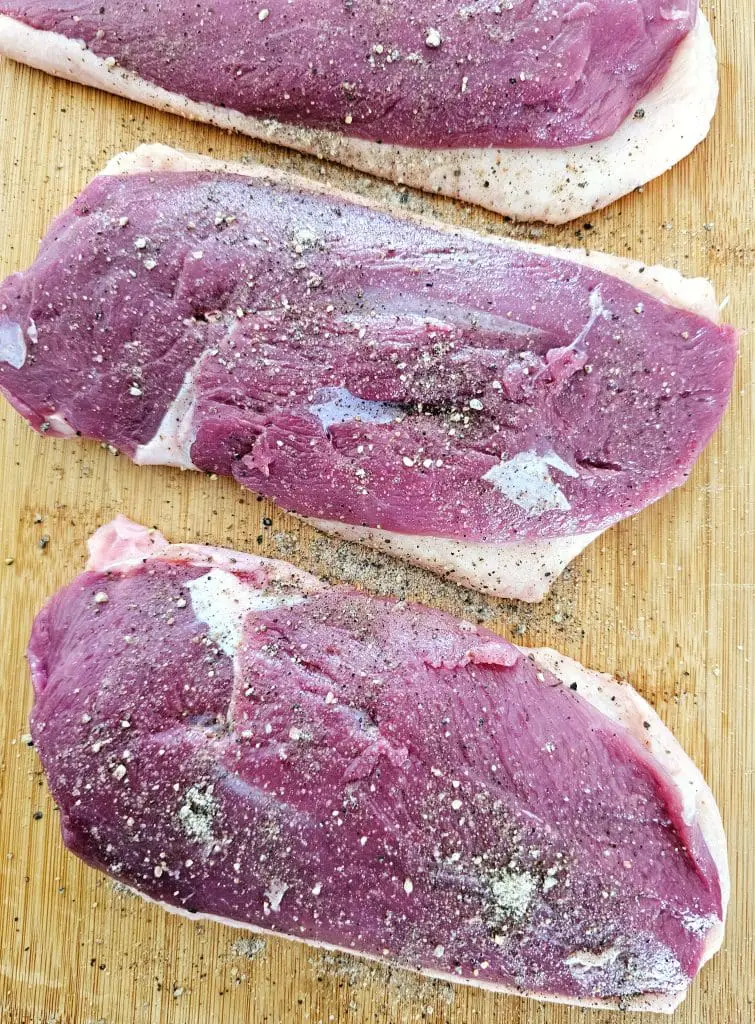
How To Remove The Gamey Taste Of Duck?
- Marinating: Marinating duck meat in acidic ingredients, such as citrus juice or vinegar, can help mellow the gamey flavor.
- Seasoning: Using herbs, spices, and aromatic ingredients in your cooking can also balance and complement the natural flavors of duck.
- Preparation Techniques: Opting for cooking methods that allow the fat to render (as in this recipe) and drain away, such as grilling or pan-searing, can help control the richness and gaminess.
Brining Duck Meat
There are a few ways you can mellow the gamey taste as mentioned - like a salt water solution for several hours or overnight also known as a brine. Brined duck meat will not only taste less gamey it will also look paler in color, so a 'domesticated' look.
About Brining Duck
If you're not sure whether to brine duck or not is based purely on personal preference. Perhaps consider that it's okay to not brine duck, or to not try and remove the garmey taste but preferably, appreciate the different tastes of meat. Afterall, what is life if lived without some intense flavors? Not everything has to be mild, so if you are someone who shrinks on the side or 'err' from the word 'gamey', always remember that gamey simply means less antibiotics.
The Best Way To Serve Duck
With a delicious sauce or marinades and whatever else you choose to serve it with. In this recipe I went with a red wine sauce, mashed potatoes and peas. The mashed potato with a hint of turmeric, and frozen peas served as a complete delicious meal. The red wine sauce was a matter of getting it right to the perfect taste so that it would complement the duck, and it did.
What Sauce To Serve With Duck
You have a few options from mushroom sauce, blackberry, orange, balsamic, cranberry to red wine sauce as served in this recipe. I decided to deepen the red wine sauce with a splash of vino cotto my absolute favorite condiment. Red wine reduced can be a little acidic especially with orange juice and the vino cotto comes in and quite soothingly makes sense of the flavors.
I don't like to call my recipes 'the best' it can sometimes come off wrong, but in this case it's my fact. We don't all experience food in the same way so let me say that for me, this sauce was perfect with the duck. The flavors are soothing yet intense without being overwhelming. To describe it even better, think umami - almost savory. Definitely not salty, not sweet either just depths of real good flavors.
You can also opt for an 'au jus' sauce which is French and translates to the meat that's served and presented in it's own natural juices. I've always loved pan juices from the roasted meat and have never seen that as anything but real good flavor! Having many times served our roasts with just au jus sauce' if I'm not making a classic Sunday gravy.
Taking Red Wine Sauce To Another Level
Using red wine, orange + zest, herbs and spices with Vino Cotto - "cooked wine". A traditional Italian condiment made by cooking down grape must (freshly crushed grape juice, including the skins, seeds, and stems) until it becomes a thick, concentrated syrup.
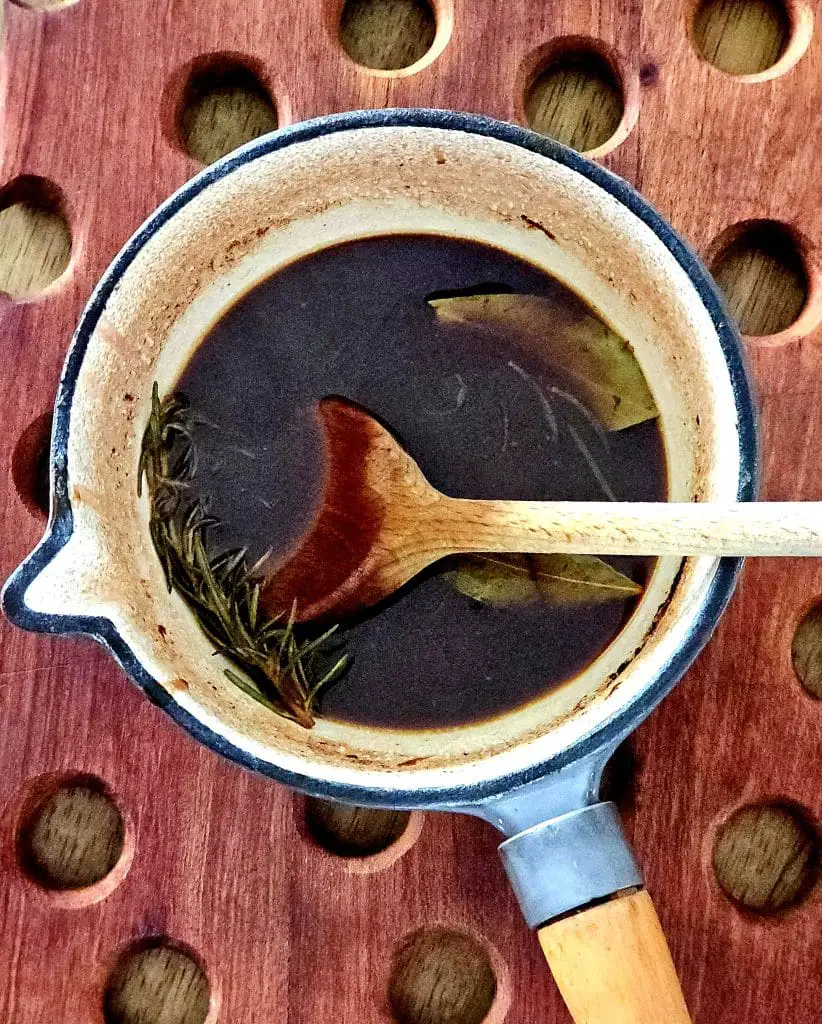
I love is so much I use it on most foods like this Brown Sugar Glazed Carrots Stovetop. Vino Cotto not only tastes different in every recipe, it's that it suttly controls any and all ingredients without dominating the flavors.

Why Make This Duck Breast Recipe
The combination of crispy duck skin, tender meat and a red wine sauce with umami depth, is all the reason to make this recipe!
Ingredients
- Duck breast
- Salt & pepper
- Red wine
- Orange juice
- Orange zest
- Honey
- Vino Cotto
- Salt & pepper
- Cinnamon
- All spice
- Rosemary
- Bay leaf
- Butter
- Beef or Vegetable stock
- Slurry (Maizena & water)
How To Cook Pan Seared Duck
'Pan seared' is probably not the correct term because to sear means the surface is hot but we are starting off with a cold pan, regardless, let's do it!
Starting off with the preparation of the duck breasts— carefully scored and generously seasoned with salt and black pepper. From the stove top and finishing off in the oven, these duck breasts are transformed into crispy skin with a medium cook.
Prep: Get the duck breasts out the fridge to room temperature before cooking, at least 15 minutes. Pat them dry with kitchen tissue paper and season both sides.
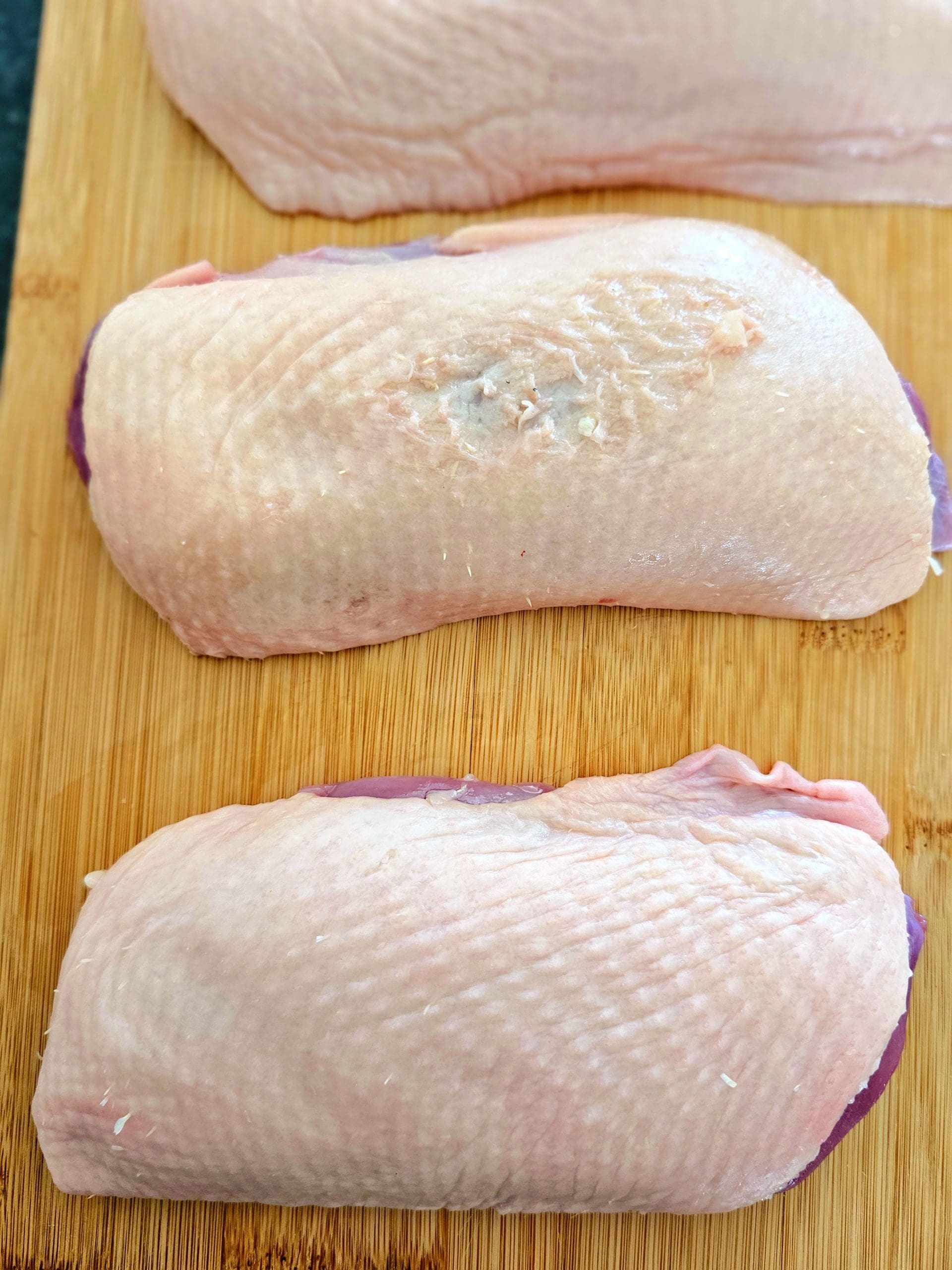
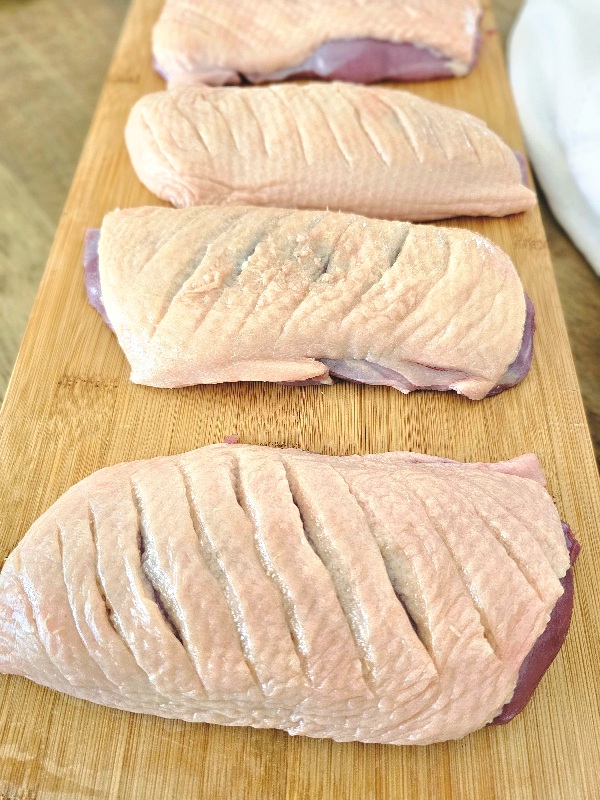
Score the duck breast: Carefully score the skin with a criss cross scoring. I went with a shape closer to an accordian shape, as I do when I make Crispy Baked Hasselback Potatoes. Do what you're comfortable with.
What To Remember When Scoring Duck
Try not to cut all the way down through the meat (like the image below, one of my attempts went pretty much more than I wanted) but it happens, keep going. Cutting just into the skin and not the meat helps protect the meat underneath and it cooks more evenly. Depends on how big (or thick) and sharp your knife is.
Season: A simple generous seasoning of salt and pepper. The salt is important as it helps release the fat in the duck isnce we are wanting to render the fat here not keep it in the duck.
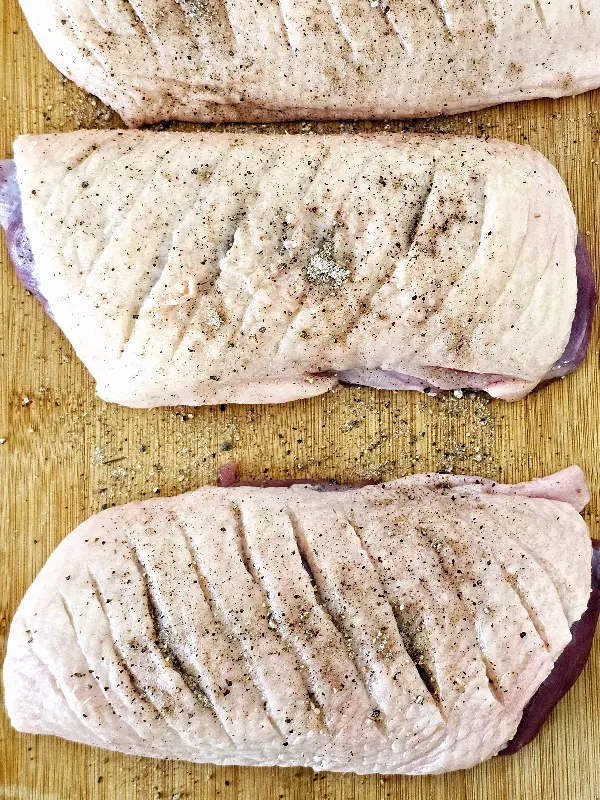

Cook the duck breasts: Skin side down in a cold skillet. Cook the duck breasts in batches if the pan is small. Low to medium heat is a good place to start since the pan is cold. I then increase the heat when they start bubbling away.
Would you like to save this?
I'd like to receive tips & recipes from Anosmic Kitchen.
You will see the heat steadily rise as the pan gets hot and the sizzling will start. All the oil in the pan is from the fat being rendered. Keep the duck fat, it truly is liquid gold.
Tip: Make roast potato with it!
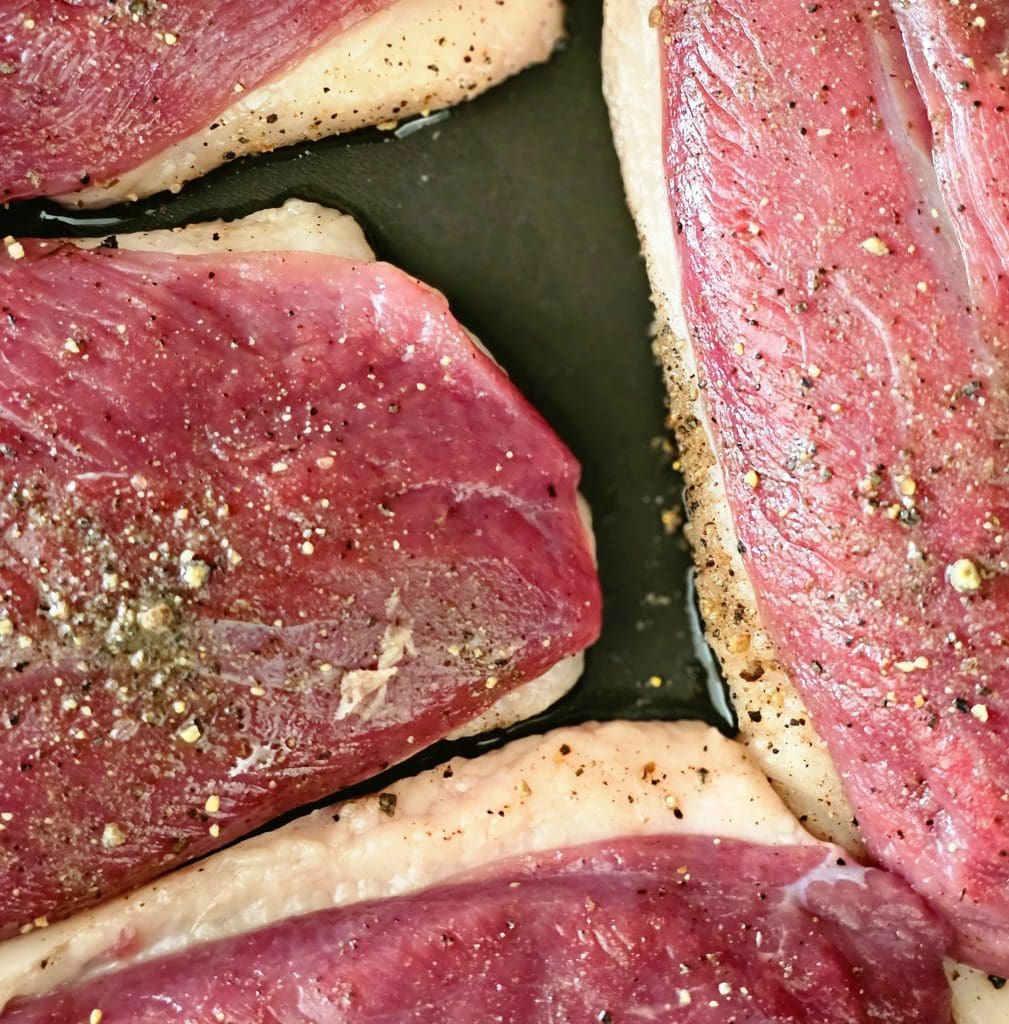
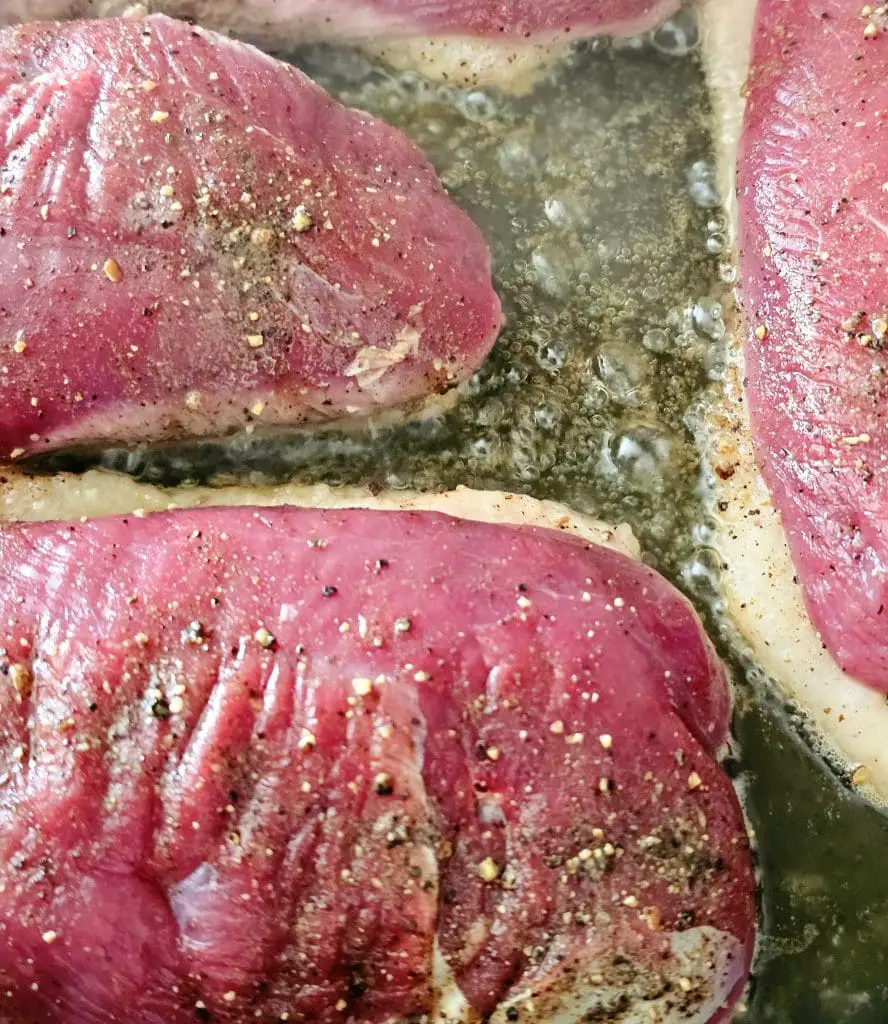
Rendering Duck Fat
The duck fat renders beautifully and if you watch it as it cooks, you get to see the levels of raw, cook and just right and you'll know exactly when to turn it over. This process takes 5 minutes although - I don't really 'time' the duck breast I check and 'turn them over' when the skin has a light golden crust.
They are going to cook on the skin-side most of the time and when you turn them over to cook on the flesh side, its for roughly 3 minutes.
From The Stove Top To The Oven
Tansfer the pan to the oven to finish cooking the duck breasts on 200C for the last 5 to 6 minutes or when it reaches the correct internal temperature.
What Is the Correct Internal Temperature For Duck Breast?
There is a lot of information out there on this topic so here's my suggestion: Cook the duck to the desired temperature. I cooked this duck breast to a temperature of 62°C /140°F which is a pale pink soft meat = medium.
We all have different stoves so you have to regulate the heat to get the result you want. Although duck is safer to eat at a lower internal temperature than chicken (because the meat type is different) it's still important to use an instant read thermometer to make sure it's safely cooked through without overcooking it.
Remember that it will continue cooking while it rests and the internal temperature will rise but not by much (2-3°C / 5°F). It will depend on the thickness of the meat (any meat). That small amount of rise is no concern if you've not already overcooked the meat! Hence the suggestion below.
Suggestion: As a matter of preference, I remove the meat from the heat source 2-3°C / 5°F before the actual time.
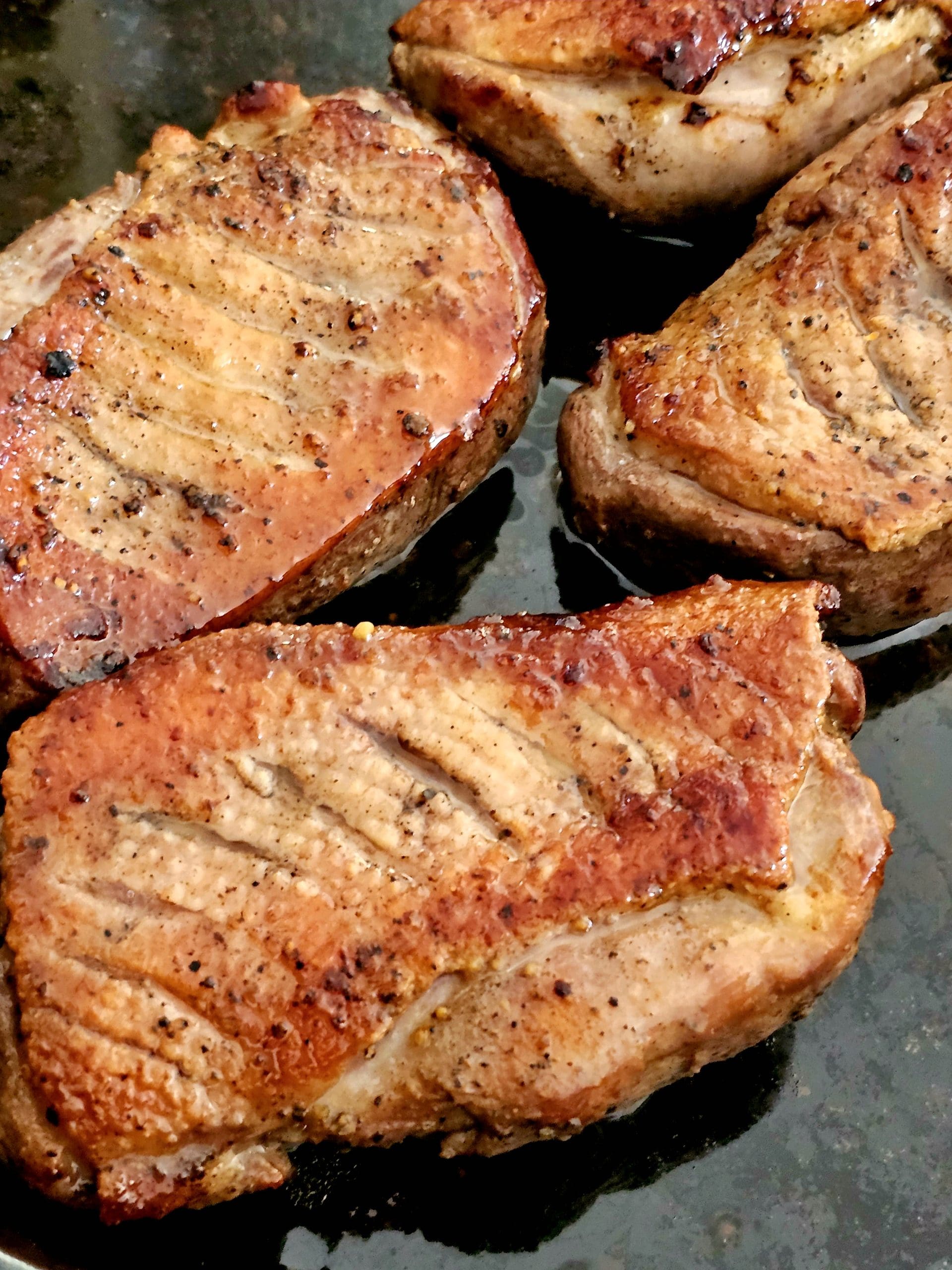
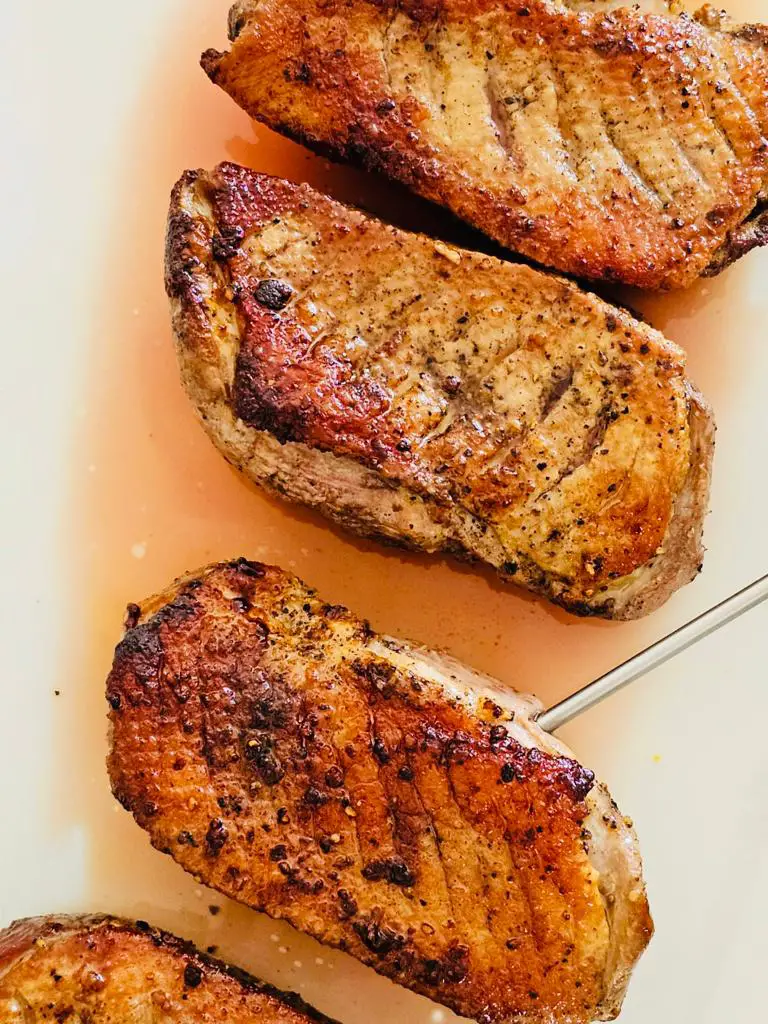
Make The Red Wine With Orange Juice Sauce
The red wine sauce is very easy and quick. You simply add all the ingredients into a saucepan, bring it up to a boil and let it simmer down. Letting the sauce cook down a bit longer and thicken is definitely an option, it depends on what consistency you want. I wanted the sauce a little thicker (quicker) so it was nothing a slurry couldn't fix. Recipe in the recipe card below.
What Do You Serve With Duck Breast?
Duck breast is a rich and flavorful meat, and there are many delicious side dishes that can complement its unique taste. Here are some ideas for what to serve with duck breast:
Mashed Potatoes: Creamy mashed potatoes provide a comforting and hearty side that pairs well with the richness of duck.
Roasted Vegetables: Roasted root vegetables like carrots, parsnips, and sweet potatoes can add a sweet and savory element to balance the richness of duck.
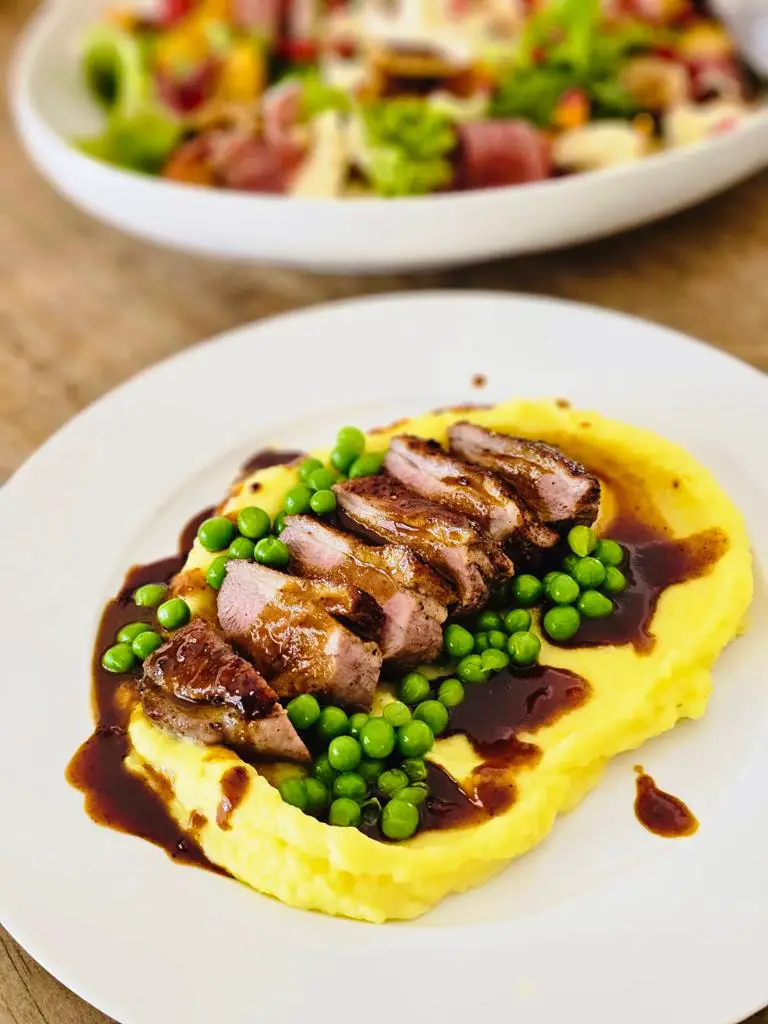
Grilled Asparagus: The slightly bitter and nutty flavor of grilled asparagus can contrast nicely with the richness of duck.
Cranberry Sauce: The tartness of cranberry sauce can cut through the richness of duck and add a delightful burst of flavor.
Citrus Salad: A light citrus salad with oranges or grapefruit segments can provide a refreshing and zesty contrast.
Cherry Compote: A sweet and slightly tart cherry compote can add a burst of flavor that complements the duck's richness.
Rosemary Roasted Potatoes: Roasted potatoes with rosemary can add an earthy and aromatic element to your duck dish.
Green Beans Almondine: Lightly sautéed green beans with toasted almonds and a hint of lemon can provide a crisp and fresh contrast.
FAQs: Duck In Red Wine Sauce Recipe
Can I use frozen duck breasts?
Thaw them completely in the refrigerator before cooking for even results.
How can I achieve crispier skin?
Ensure the duck skin is dry before cooking and score it to render the fat effectively, the surface area is increased when you score the skin. Start cooking it in a cold pan as this allows the fat to render keeping the meat tender.
Why is it important to score the duck skin?
Scoring the duck increases the surface area of the skin and this allows more fat to render more quickly. What does that even mean? Simply put, it equals crispy skin! Scoring also helps flavors to absorb into the meat and helps prevent the meat from possibly distorting while cooking.
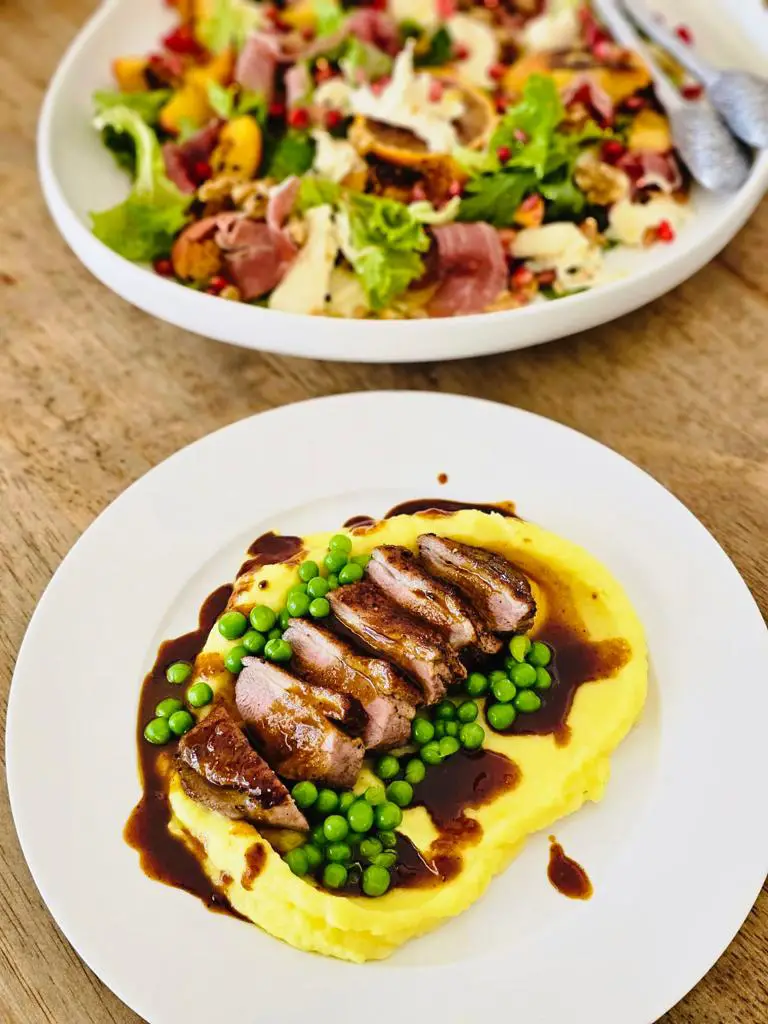
Recipe Notes
Don't discard duck fat! You know the saying of duck is liquid gold? Well it's true, you can use it for duck fat roast potatoes, pour it over toast, cooking garlic and onions, pour it over rice or pasta, you get the gist, anything!
Cooking duck breast: Your only responsibility is to increase the heat as the duck starts to heat up because it should be hot and on high by the time it reaches a hot sizzle. Use a spatula to carefully press down on top of the duck. This helps to prevent the duck breast from curling up too much.
Related Recipes
- Potato Salad
- Homemade Cranberry Sauce
- Caprese Salad Sticks
- Instant Pot Gammon
- Roast Chicken and Potatoes
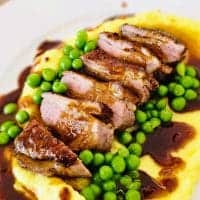
Duck In Red Wine Sauce
- Total Time: 35 minutes
- Yield: 4 People 1x
Description
Whether you pan sear duck or cook it in the oven, it's always a stunning main dish. This duck in red wine sauce is cooked perfectly with crispy skin and medium meat. The duck fat renders beautifully and if you watch it as it cooks, you get to see the levels of raw, cook and just right and you'll know exactly when to turn it over. The perfectly cooked red wine sauce helped mellow the gamey taste of the duck breast. Let's cook duck breast!
Ingredients
For The Duck Breast
- 4 Duck breasts
- salt and pepper
Red Wine Sauce
- ½ cup red wine
- ½ cup fresh orange juice
- zest of 1 whole orange
- 2 tbsps honey
- 2 tbsps vino cotto
- ¼ tsp salt & pepper to taste
- ⅛ th teaspoon cinnamon
- ⅛ th teaspoon all spice
- 2 bay leaves
- 1 sprig fresh rosemary
- 1 tbsp butter
- ¼ cup vegetable stock
- 1 tsp maizena + 1 tbsp water combined to make a slurry
Instructions
- Preheat: Preheat the oven to 200°C / 392°F
- Prepare Duck Breast: Pat the duck breasts dry with paper towels or a clean dish towel. Score the skin without cutting through the meat. Season both sides of the duck breasts with salt and black pepper.
- Cook Duck Breast (Dry Sear): Place the duck breasts skin side down into a cold dry skillet. The heat should be low because you're starting with a cold pan and no oil. As the duck warms up, increase the heat and wait for it to sizzle. After 5 minutes on a sizzle (skin side down) the skin will be crispy and a light golden brown. Turn the duck breasts over and cook the other side for 2 to 3 minutes for medium.
- Transfer the pan to the oven and let the duck breasts roast for 3 minutes. Use an instant read thermemeter to check the internal temperature, it should be 62°C /140°F for medium.
Rest The Duck
- Transfer the duck breasts to a plate and cover loosley with allumunian foil, giving them time to redistribute the juices - back into the duck. Rest for 15 minutes. Don't toss out the duck fat, pour it into a cup and keep it for the best roast potatoes!
- Make the sauce: Pour the sauce ingredients (except the vino cotto) into a saucepan and bring to a boil. Once boiling, drop the heat to a decent simmer, for 2 to 3 minutes. Remove the rosemary and bay leaves, discard. Add the vino cotto, stir it in. Combine the maizena and water to make a slurry and pour it into the sauce stirring gently for a couple of seconds, it will thicken immediately, remove from the heat.
- Serve: Slice the duck breasts into fairly thick slices and pour the sauce over. Serve with a side of mashed potatoes and peas or a side dish of your liking.
- Prep Time: 10 minutes
- Cook Time: 10 minutes
- Category: Main Dish

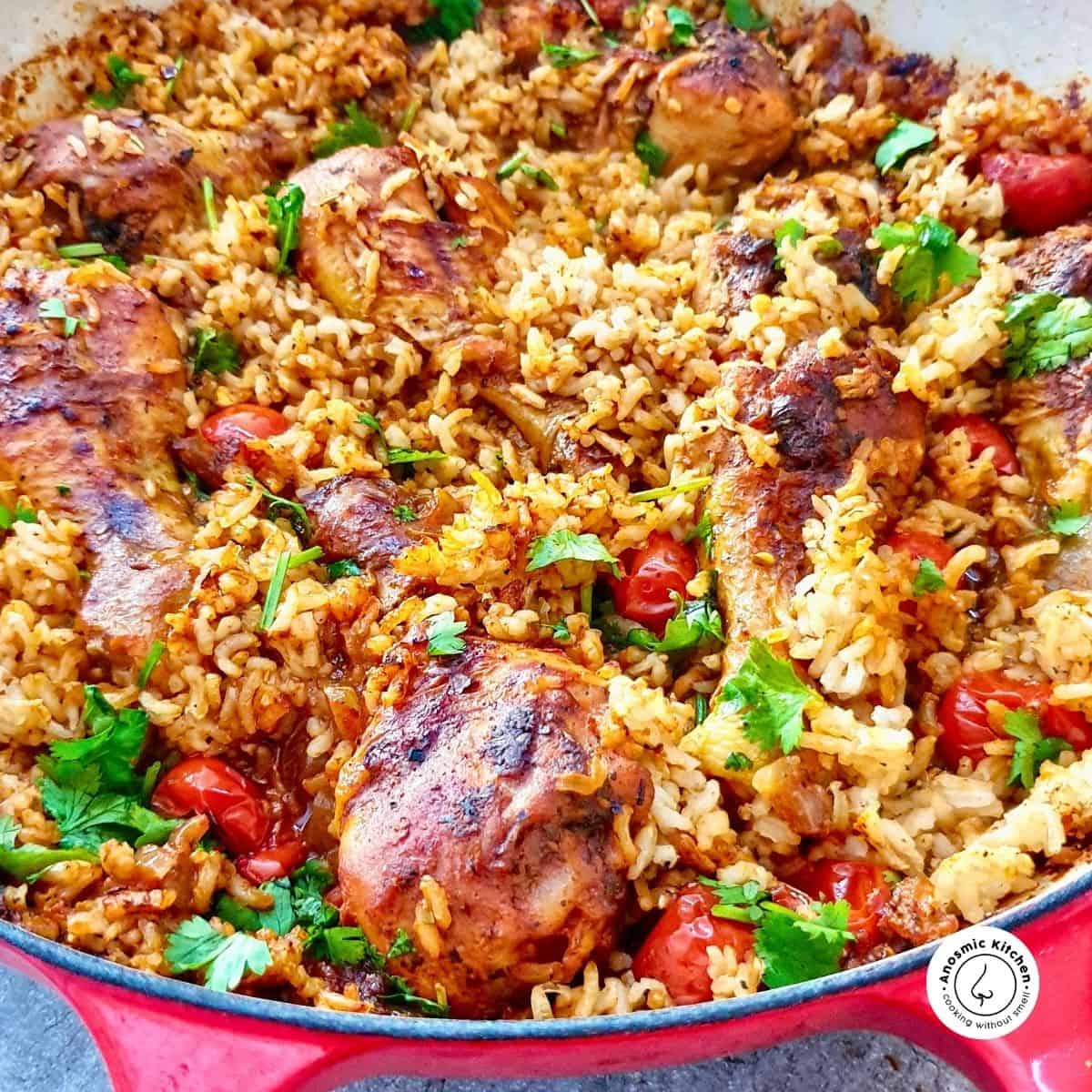



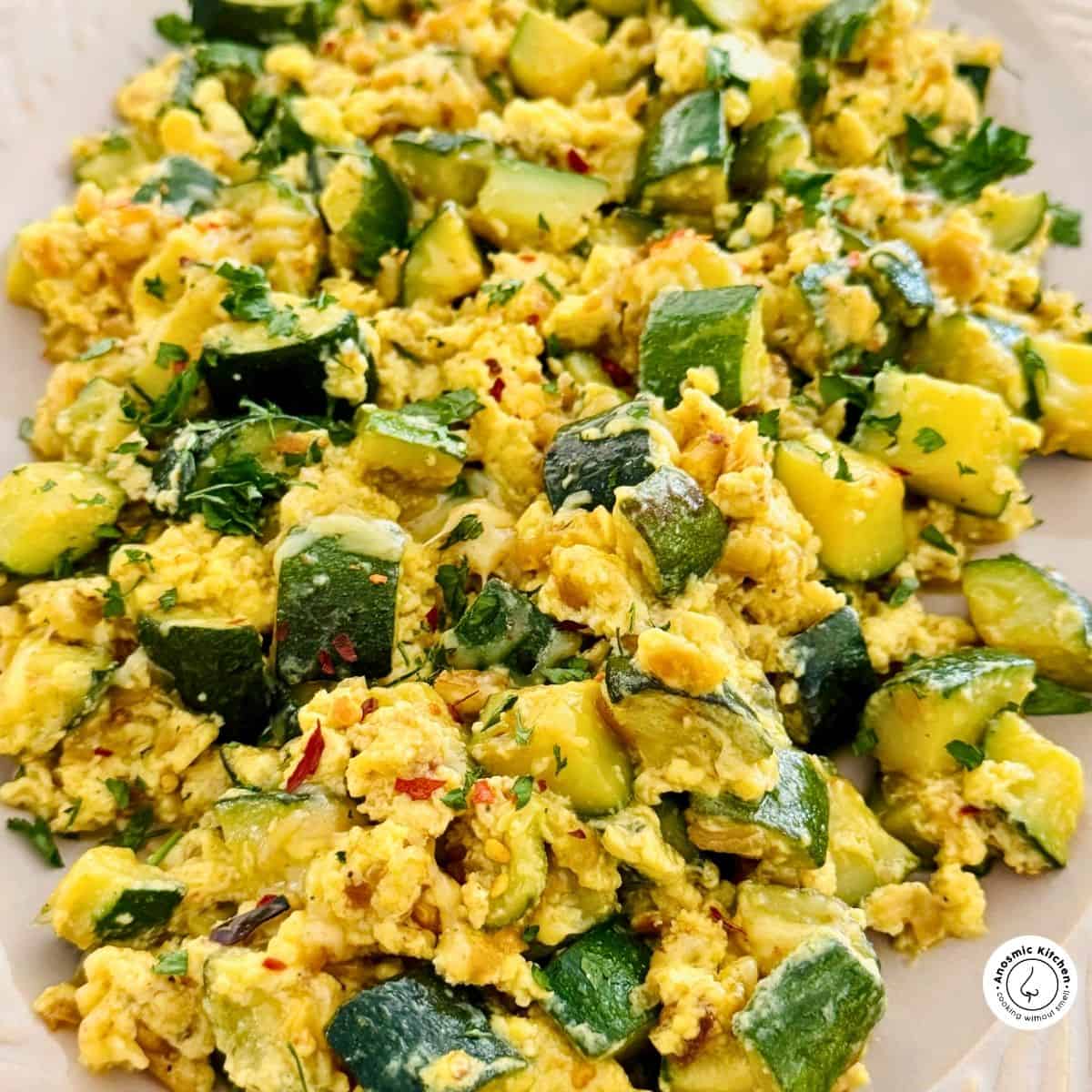
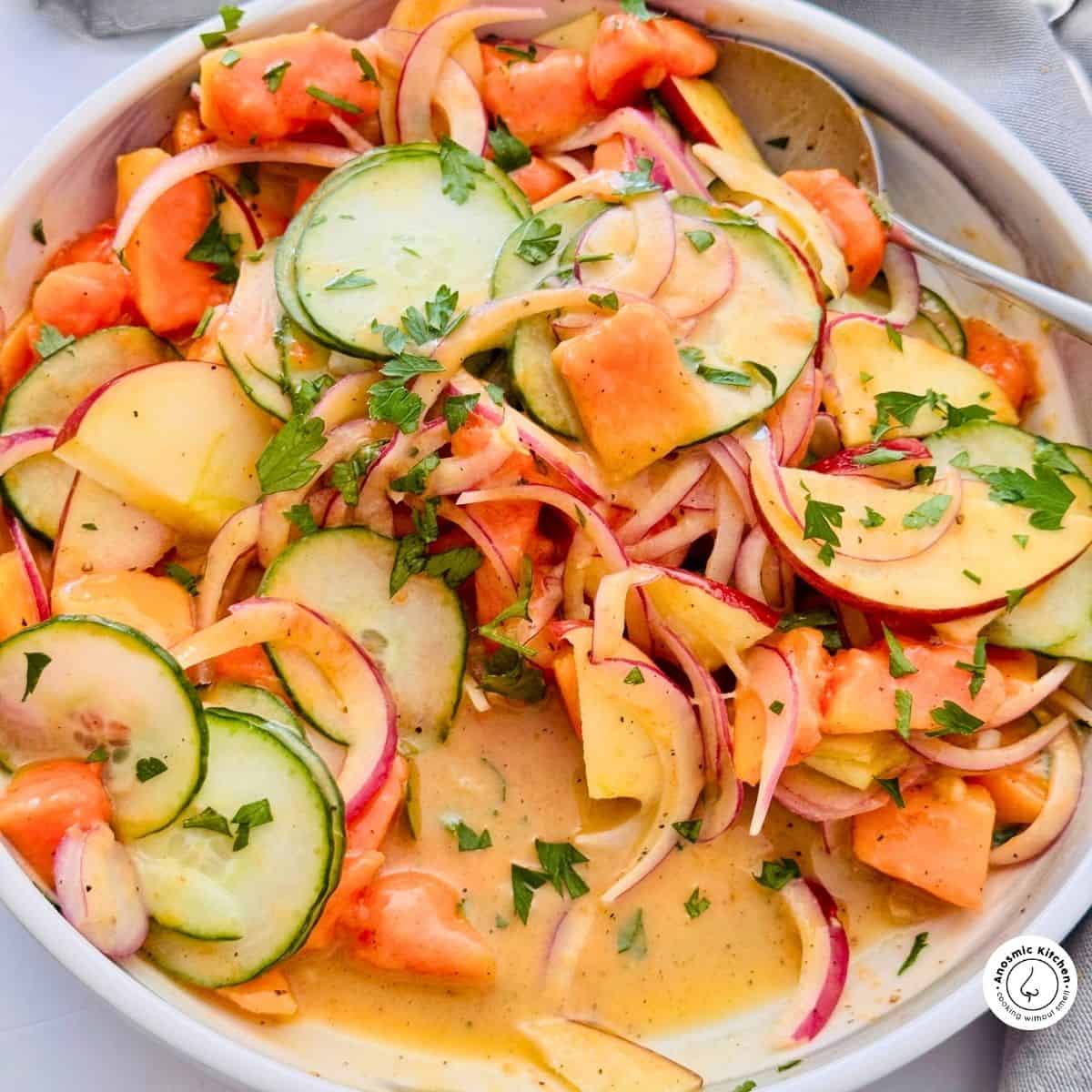
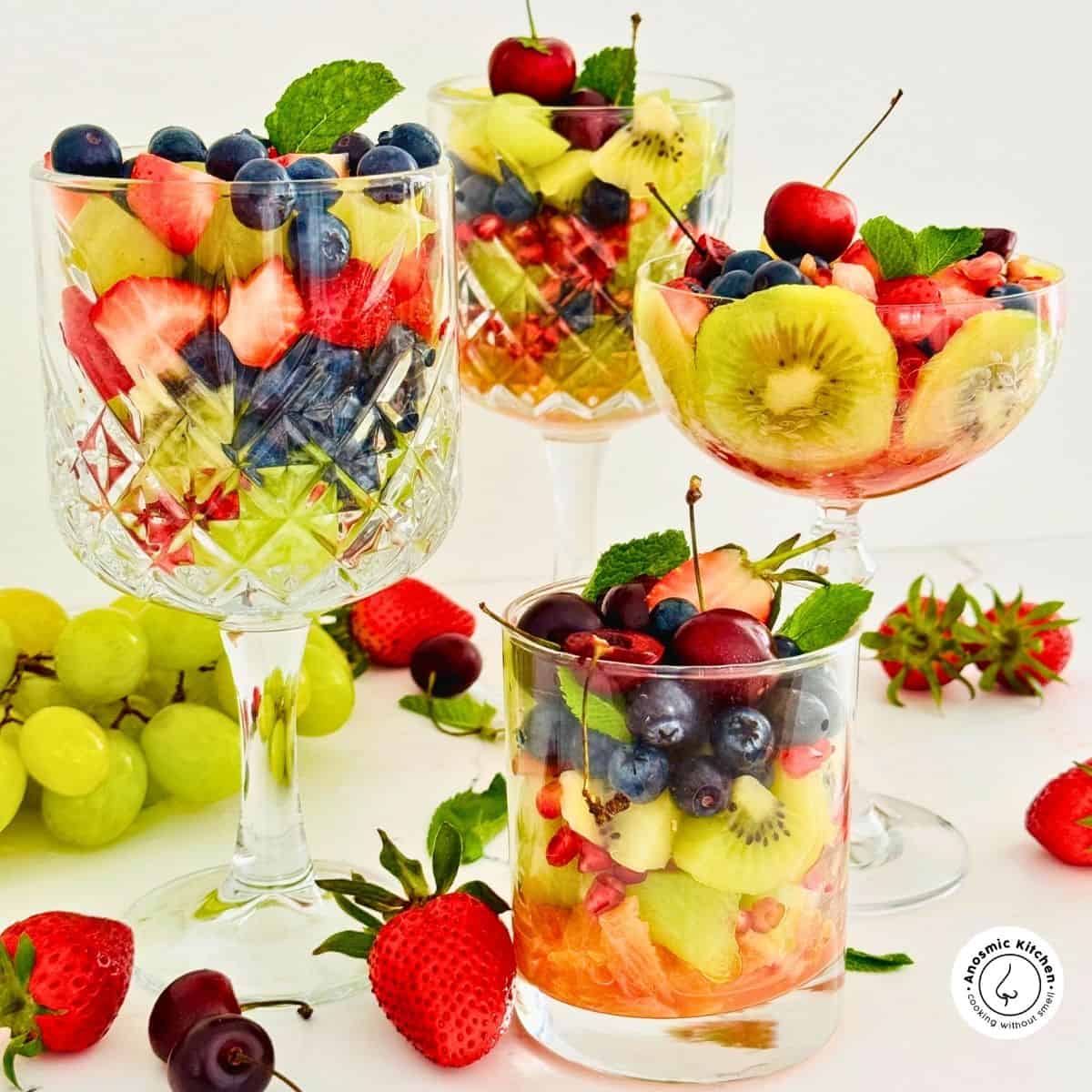

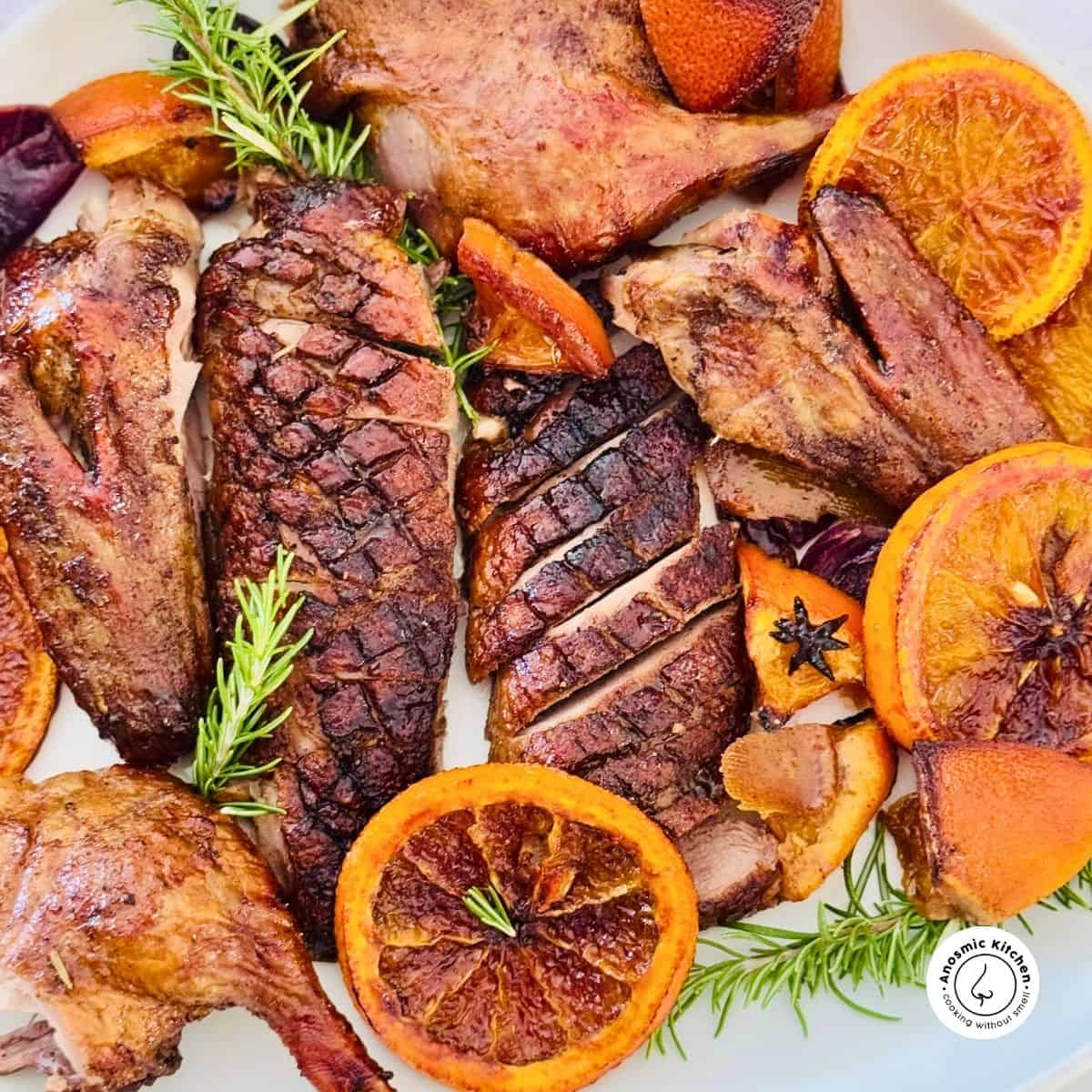



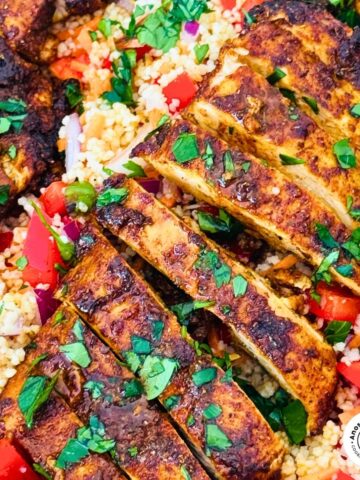


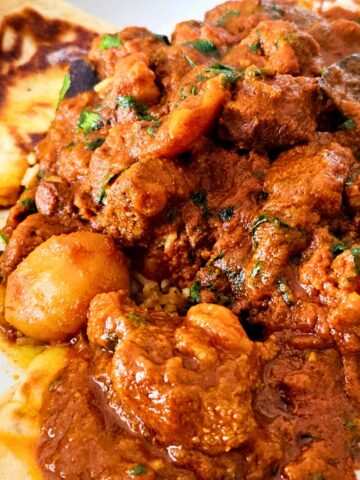
Comments
No Comments